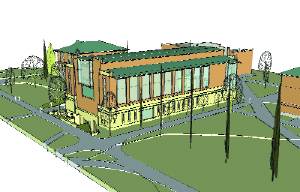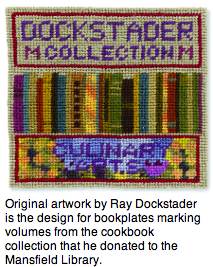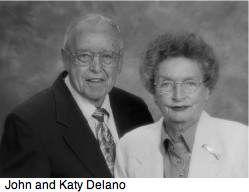UM Foundation
Journalism School Will Replace Aging Building with Don Anderson Hall
 Start of construction is still weeks away, but the School of Journalism has already named its building Don Anderson Hall.
Start of construction is still weeks away, but the School of Journalism has already named its building Don Anderson Hall.
Anderson was principal negotiator for Lee Enterprises in the 1959 purchase of five Montana daily newspapers from the Anaconda Copper Mining Company, a move hailed by many as the liberation of the Montana press from the tight rein that characterized Anaconda policy.
Approval of the name came at the state Board of Regents’ January meeting and paves the way for construction to begin this spring on a $12-million facility to replace the building that has housed the journalism school since 1936. The new 57,000-square-foot facility will support growing student enrollments, changes in technology, and integration of the school’s award-winning print, photo, and broadcast journalism programs.
The building is to be constructed with private funds, $10 million of which has already been committed, mostly from friends, family, and colleagues of the late Lee executive. The school’s director of development, Curtis Cox, said fund raising for the remaining construction costs is underway. He is available to talk about gift opportunities and can be reached at 406-243-2585 or 800-443-2593.
Journalism Dean Jerry Brown, who knows Anderson only from historical records and conversations with his friends, describes him as a consummate diplomat and a man of impeccable character with a “commitment to the principles of a free press in a democracy.”
“To call him the ‘Abraham Lincoln of Montana journalism’ [as his 1978 obituaries did, describing his liberation of the Montana news media from control of the Anaconda Company] is not an overstatement,” says Brown. When Anderson was inducted into the Montana Journalism Hall of Fame, it was noted that in contrast to Anaconda Company policies, he personally “encouraged and inspired his Montana editors and publishers to exercise their new freedom with complete and fair news coverage, hard-hitting editorial positions on issues, and reader access to newspaper columns with letters to the editor.”
Brown says Anderson’s values as a newspaperman mirror those of the Montana school. His spirit is closely aligned to the J-School’s mission to be a “closely defined professional school,” which stresses the fundamentals of accurate, clear, and ethical reporting, and does not dilute its curriculum with mass communications, public relations, and advertising. Dedication to that mission has made UM’s journalism school one that is nationally known and respected. In the last five years, UM has been among the top ten out of 109 accredited journalism programs in the Hearst competitions for student writers, photographers, and broadcasters.
Besides the mark Anderson made on the journalism profession, Brown says he’s struck by the number of contributions to the building project that have come from individuals who would describe themselves as friends, rather than colleagues.
Among chief contributors to the project are Anderson’s daughter and son-in-law, Sue and John Talbot of Missoula. John Talbot, former publisher of the Missoulian, was also a Lee colleague of Anderson’s, as was Lloyd Schermer and his wife, Betty, who now live in Aspen, Colorado. Schermer is the former president of Lee Enterprises. Other family friends who made major gifts to the building are Stephen and Margaret Tse of Montclair, New Jersey, and the Walter A. and Dorothy Jones Frautschi Charitable Trust of Madison, Wisconsin; as well as the Lee Foundation, and Penny Peabody, a former Lee reporter and editor and past chairman of the UM Foundation board of trustees, and her husband Jerry, Mercer Island, Washington. Other major contributors to the building project are Ben Pollner of London, England, and Alice Pollner, New York. The Pollners are parents of T. Anthony Pollner, a 1999 J-School graduate, in whose memory they made a gift for a suite of offices for the Montana Kaimin.
While details of Anderson Hall are not totally solidified, the building concept is. A four-level structure, it will have a variety of classroom configurations, seminar rooms and studios, production rooms and laboratories, and moderate-sized classrooms. It also will house a 350-seat auditorium and the journalism library. Offices are planned for resident and visiting faculty members.
And, for the first time in more than a generation, all journalism programs will be together under one roof to facilitate collaboration among students and faculty. “We live in a multimedia world,” Brown says. “Print journalists need to know principles of broadcasting and vice versa. Photographers work in design. Electronic and still photojournalists influence each other.”
Possibilities are endless, Brown believes, as he talks about being able to host programs for working professionals, such as media management seminars, and enhancing the school’s reputation as a leader in Native American journalism.
COT Library
Gets Extensive
Cookbook Collection
The former chief legislative aide to U.S. Senator Mike Mansfield has given a collection of contemporary cookbooks to the Maureen and Mike Mansfield Library.
Raymond Dockstader ’52 donated some of his extensive collection of contemporary cookbooks, many of which are signed and inscribed first editions. A few of the rarest volumes will be placed in the library’s archives, but the great majority of the collection, valued at over $10,000, will be housed at the UM College of Technology Library for the principal use of students and faculty in the culinary arts program.
 When it came time for Dockstader to cull his collection, it was his interest in giving something back to Montana and supporting an academic program at his alma mater that prompted the gift, according to Frank D’Andraia, dean of library services. “I had no idea the University had this program,” Dockstader said, but after learning of the UM culinary arts program, he recognized that his books would have great value as a teaching collection.
When it came time for Dockstader to cull his collection, it was his interest in giving something back to Montana and supporting an academic program at his alma mater that prompted the gift, according to Frank D’Andraia, dean of library services. “I had no idea the University had this program,” Dockstader said, but after learning of the UM culinary arts program, he recognized that his books would have great value as a teaching collection.
Many of Dockstader’s books featured recipes for desserts and pastries, because he enjoyed baking and making confections. During his time in Mansfield’s office, he often brought treats for his colleagues, especially his famous almond roca, which he gave as gifts at Christmas. The last few years he made it, he had to enlist helpers, and so he decided that he had to call an absolute halt to the practice. After a time, Mansfield approached him and asked, “Ray, why have you taken me off the list for the almond roca? Have I offended you in some way?” Dockstader said, “I told him ‘certainly not’. I had just had to stop making it altogether. The Senator just said ‘Oh’ and walked away.” Mansfield had been very fond of Dockstader’s candies.
Besides his cookbook collection, Dockstader also collects ceramic and medallion art and has a collection of ceramics at the Archie Bray Foundation for Ceramic Arts in Helena. He’s also an accomplished artist himself. Library donors who make gifts like Dockstader’s are allowed to select or design a bookplate to place in their volumes. Dock-
stader, whose specialty is petit point, for which he has earned many honors from the Woodlawn Plantation Needlepoint Exhibition and Competition, created a piece for his design and it will signify the books in the Dockstader cookbook collection.
Delanos Chosen for 2004 Bucklew Award
 John ’47 and Katy Shallenberger ’49 Delano of Helena received the Neil S. Bucklew Presidential Service Award at the University’s Charter Day observance in honor of their long-standing commitment to communicating UM’s strengths and needs to their community and the state.
John ’47 and Katy Shallenberger ’49 Delano of Helena received the Neil S. Bucklew Presidential Service Award at the University’s Charter Day observance in honor of their long-standing commitment to communicating UM’s strengths and needs to their community and the state.